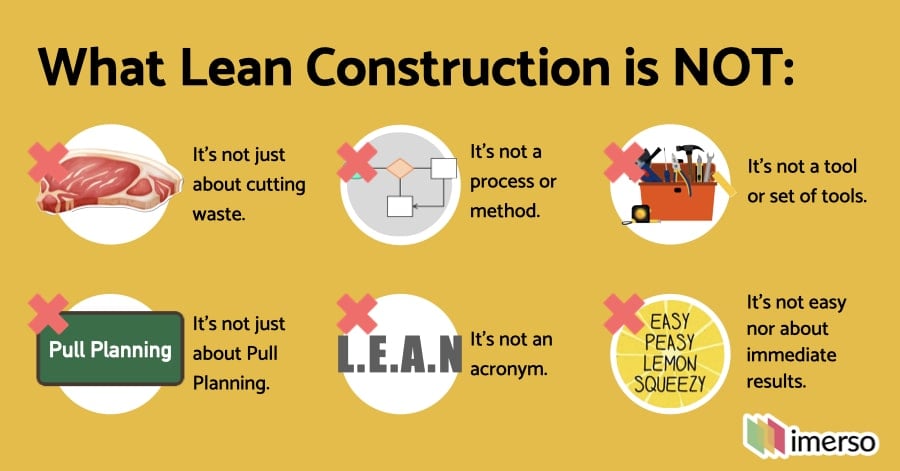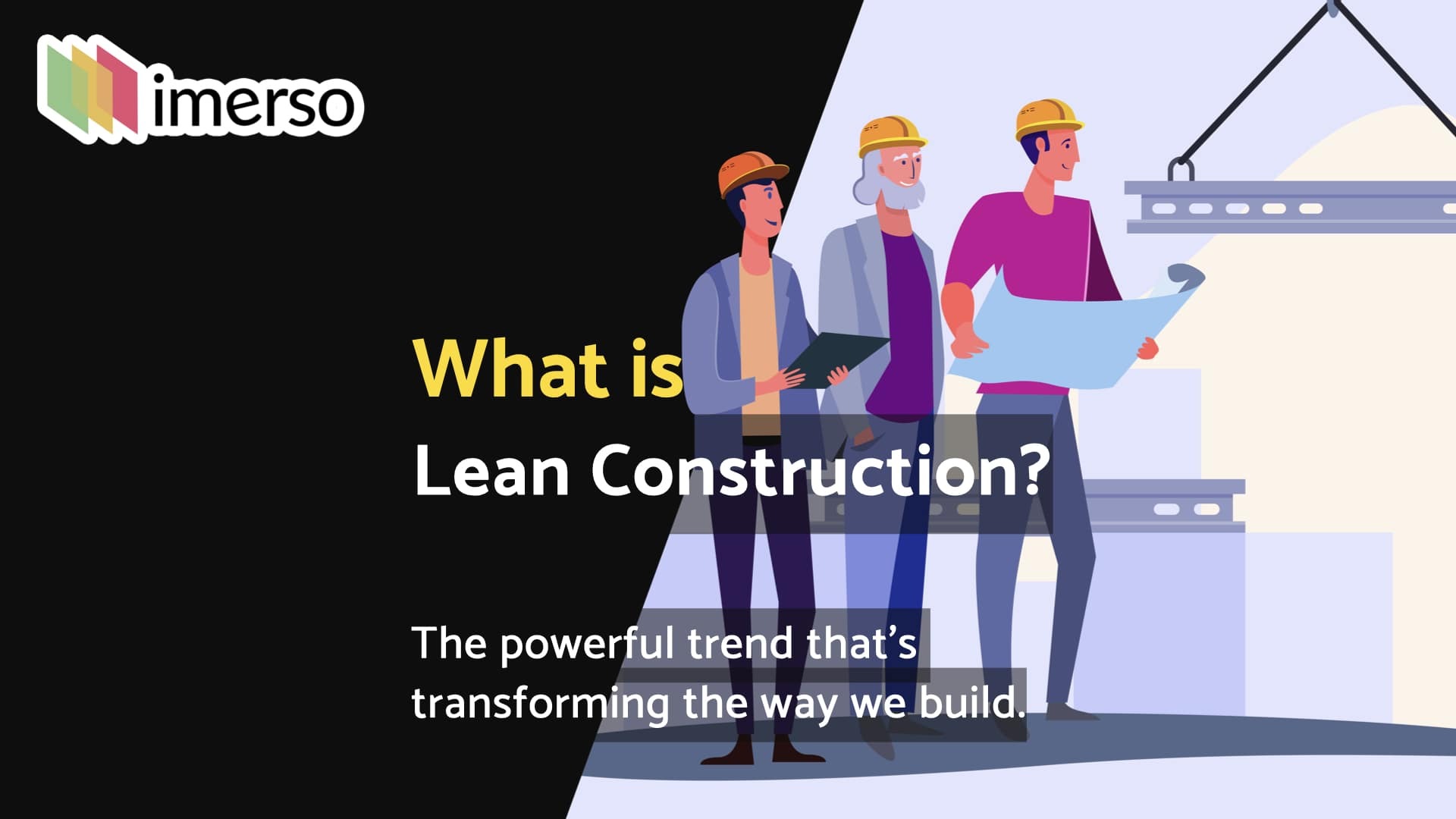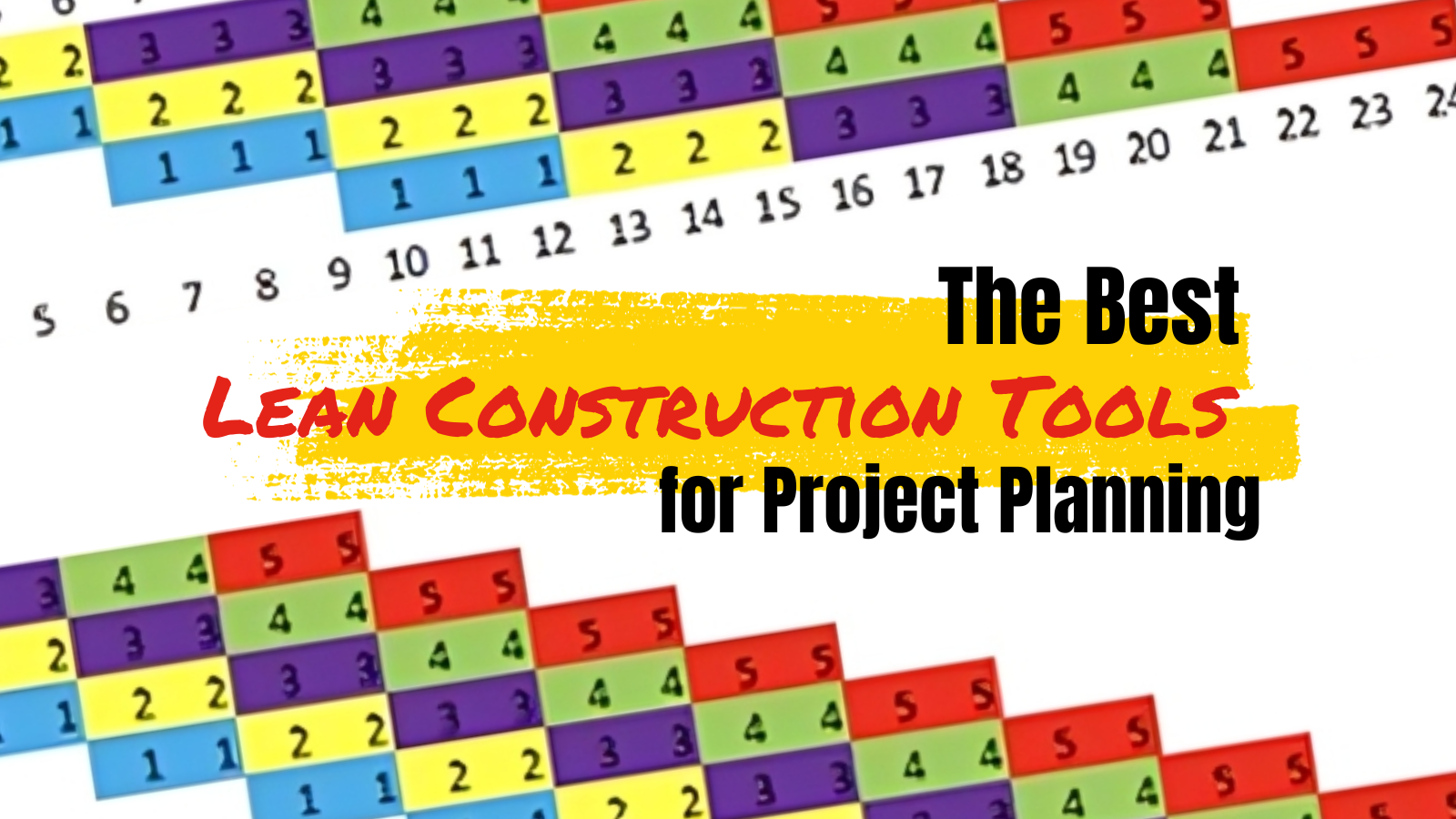Table of Contents
Where Did Lean Construction Originate From?
What are the Benefits of Lean Construction?
Examples of Using Lean Construction in Projects
Conclusion
What is Lean Construction?
Lean is a philosophy, based on the dedication to continuous improvement and respect for people. It focuses on teams working as a single unit, delivering ever-increasing value to customers and eliminating waste at every step.

|
Lean challenges the traditional belief that there must always be a trade-off between time, cost, quality, and safety. Its motto is: produce the right thing, at the right time, in the right place, in the right quantity, using exactly what you need and nothing more.
Unlock Powerful Lean Construction Workflows by Combining Solibri with Imerso.>>
Where Did Lean Construction Originate From?
Foundation of Lean Thinking
The roots of Lean thinking can be traced back to Henry Ford's groundbreaking production process in 1913. He integrated interchangeable parts, standard work, and moving conveyance to create flow production. However, Ford's system couldn’t offer variety and adaptability.
In the 1930s, Toyota engineers Kiichiro Toyoda and Taiichi Ohno revisited Ford's ideas and developed the Toyota Production System, which revolutionised how products were made.
Unlike Ford's system, Toyota's approach focused on the entire process, not just individual machines. They optimised machine size, ensured high-quality standards, facilitated quick setups, and improved communication between process steps. The goal was to achieve cost efficiency, offer a wide range of products, maintain excellent quality, and speed up production.
Toyota's success served as a shining example of the power of Lean thinking. Their innovative approach propelled them to the forefront of the industry, with increased sales, market shares, and advancements in hybrid technology.
The impact of Lean thinking extended beyond manufacturing. It reached sectors such as construction, logistics, services, healthcare, and even government. .jpeg?width=720&height=377&name=Lean.001-min%20(1).jpeg)
Lean in Construction
The use of Lean in design and construction begins with the erection of the Empire State Building, though they didn't know about Lean back then.
The versatility and effectiveness of Lean methodologies attracted leaders worldwide, prompting them to adopt Lean principles to streamline processes, eliminate waste, and continuously improve performance.
Today, organisations across the globe recognise the value of Lean thinking. Leaders actively integrate Lean principles into their operations, aiming to enhance efficiency, quality, customer satisfaction, and overall organisational performance. Lean thinking has become an essential approach for driving success in today's competitive business landscape.
What are the Benefits of Lean Construction?
In essence, Lean construction maximises value for all stakeholders while minimising waste and enhancing process efficiencies. Unlike traditional projects, where teams primarily focus on their own tasks and objectives, Lean construction encourages a holistic perspective, urging individuals to optimise the project as a whole.
By aligning processes, reducing disruptions, and fostering teamwork, Lean construction is revolutionising the industry. This transformative methodology is delivering remarkable outcomes in terms of work productivity, profitability, and sustainability.
Projects, regardless of their size or complexity, are a confluence of various interdependent processes happening simultaneously. However, when these processes are disrupted or poorly coordinated, they create bottlenecks, delays, and wasteful activities.
|
Embracing Lean construction comes with numerous benefits for all stakeholders involved, as it:
1. Enables improved project delivery by minimising delays and budget overruns.
The collaborative nature of Lean construction fosters effective communication and coordination among teams, ensuring the timely completion of tasks and reducing project risks. Moreover, by eliminating waste and optimising resource allocation, Lean construction enhances cost efficiency, allowing for better financial outcomes.
2. Encourages teams to actively identify areas for enhancement at every stage of the construction process.
This commitment to ongoing learning and refinement results in increased productivity and higher-quality outcomes. This is reinforced by having the proper incentives and risk sharing from the start, using delivery models like IPD.
3. Let teams focus on customer satisfaction.
By aligning project objectives with customer expectations and actively seeking feedback, stakeholders can ensure that the end result meets or even exceeds client requirements, fostering long-term relationships and positive reputations.
Examples of Using Lean Construction in Projects
The Children's Hospital Construction in the USA
The Children's Hospital of Philadelphia (CHOP) is one of the leading paediatric hospitals in the world. In 2012, CHOP embarked on a $1.5 billion expansion project, which included:
- new 12-story inpatient tower,
- new outpatient centre,
- new central utility plant.
|
As a result, CHOP achieved significant benefits, such as reducing construction time by 15%, saving $80 million in costs, increasing patient satisfaction by 20%, and enhancing safety and sustainability.
The Shard Construction in the UK
The Shard is a 95-story skyscraper in London, UK, that stands as the tallest building in Western Europe. It was completed in 2012, after four years of construction, and features a mixed-use design that includes offices, residences, hotels, restaurants, and a public viewing platform.
|
These practices helped the project team to overcome the challenges of working in a congested urban site, with limited space and access, and to deliver the project with minimal disruption, waste, and defects.
The T-30 Hotel Construction in China
One notable example of Lean construction's transformative power is the T-30 Hotel in China, constructed in 2011. Employing Lean production tools and methods, this 30-story building was assembled astonishingly fast, taking a mere 15 days. The project showcased several innovative features, including earthquake resistance five times higher than the local standard. Equally impressive was the fact that no work-related injuries occurred during the construction phase. The T-30 Hotel exemplifies the pinnacle of Lean construction, setting a benchmark for efficient production management.
University Construction in the USA
The University of California, San Francisco (UCSF) is a renowned academic medical centre that provides research, education, and patient care. In 2015, UCSF opened a new 289-bed hospital complex, which consists of three speciality hospitals:
- Benioff Children's Hospital,
- Bakar Cancer Hospital,
- Betty Irene Moore Women's Hospital.
|
These methods enabled the project team to achieve remarkable results, such as reducing design errors by 75%, increasing productivity by 30%, lowering change orders by 50%, and improving patient outcomes by 40%.
Conclusion
Lean Construction presents a compelling alternative to the traditional practices that have long plagued the construction industry. By focusing on value creation, waste reduction, and process optimisation, Lean construction revolutionises the execution of projects.
The remarkable success of the T-30 Hotel, The Shard, The Children's Hospital of Philadelphia and The University of California serves as a testament to the transformative power of Lean construction. As the industry embraces this approach, we can expect to see greater efficiency, enhanced stakeholder satisfaction, and a brighter future for construction projects worldwide.
About Imerso
Imerso is a software platform that combines BIM, Reality Capture, and AI technologies to automate construction site supervision and quality inspections with one simple workflow. We help construction companies cut project risks and delay costs with real-time monitoring of site status and work quality. Learn more here>>.

.png?width=350&height=147&name=Imerso_Logo_A4_White_Transp%201%20(1).png)



.jpg)